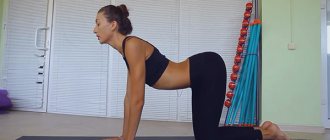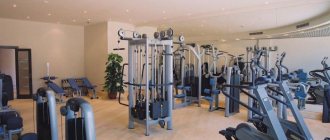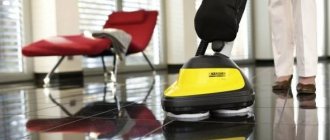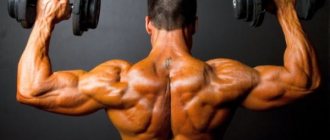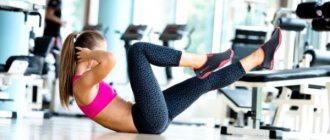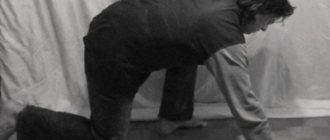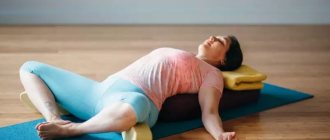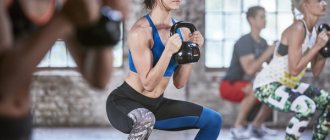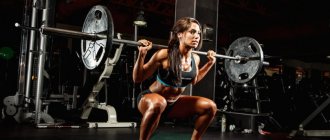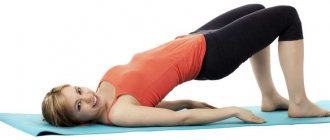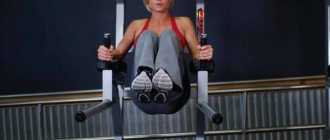After attending training, regardless of whether you are a professional athlete or play sports several times a week, fatigue and stress accumulate in the body. Intense physical activity in the gym tones muscles and normalizes metabolism, but at the same time, you may feel discomfort and pain in the soft tissues. The reason is the accumulated metabolic products and lactic acid, which are released into the body as a result of active sports.
To effectively get rid of the presence of negative substances, you need to build your workout correctly. Professional trainers at the Premier Sports fitness club will help you with this, as well as sports massage procedures.
The benefits of massage after exercise
Excess lactic acid or lactate is removed from the muscles, causing microtrauma to the tissue. This, in turn, causes pain in athletes, causing them discomfort. Overstrained muscle fibers are in hypertonicity for several hours after exercise, which also causes discomfort.
Sports massage helps relieve tension and improve the supply of blood and oxygen to tissues. Experts recommend conducting sessions no later than 3 hours after training - it is during this period of time that the tissues are most susceptible to physical impact. As a result:
- overstrained muscles relax;
- lymph flow and metabolic processes in the body accelerate, venous outflow increases;
- thanks to the active delivery of oxygen and nutrients, the feeling of internal fatigue and stiffness disappears;
- pain syndrome is relieved;
- prevention of adhesions and fibrosis resulting from sports microtraumas occurs;
- locations of possible injuries are identified.
In general, cell regeneration, blood circulation and delivery of nutrients to organs and tissues improve. Massage helps you relax after an intense workout, get rid of soreness, and speed up recovery processes.
If your goal is to lose weight, a combination of fitness and massage will allow you to get positive results in the optimal time frame. In this case, a modeling massage procedure lasting 45 minutes is recommended. The skin will tighten, the silhouette will take on a sporty shape, and the appearance of cellulite and stretch marks will disappear.
In order for your body to tone up faster, it is enough to perform massage procedures for 30 minutes. In this case, wellness, lymphatic drainage, and relaxation massages are suitable.
Gym
Aquazone
Body and mind
Pain varies
Those who go to work out know that there are two types of pain: the burning of muscles during an intense workout and the pain that occurs the day after visiting the gym. In the first case, the pain is associated with the production of lactic acid. The latter occurs in the body when the muscles lack oxygen due to intense exercise.
“Lactic acid acts as a kind of intermediate product, a mediator in energy processes: it is easier for the body to use it than glucose. If the workout is very intense, then the level of lactic acid production increases, and it has the property of splitting off hydrogen ions. It is he who “burns” your muscles,” Rzhevtseva explained.
According to the expert, the pain that appears the next day is more likely due to damage to muscle fibers during training and their inflammation.
How to massage muscles after training
During intense physical activity, the muscles are most defenseless, and the risk of injury is quite high. Therefore, it is recommended to devote the period after training to recovery procedures, in particular massage.
Techniques that allow you to relax and calm your muscles after intense work are quite simple and can bring a lot of pleasure. It is recommended to contact a massage therapist within 2-3 hours after training, but no later than 12 hours before starting a new one.
- The main task at the beginning of the procedure is to relieve tension from the muscles that received maximum load during the exercises. The massage therapist begins to perform light pressing movements from the part of the limb closest to the body;
- Particular attention is paid to those areas where the lymph nodes are located. Manipulations here are also performed without strong pressure, freeing tissue from stagnation. After this, the liquid is evenly distributed throughout the body by stroking and rubbing;
- patting with palms or fists allows you to activate blood flow in the affected area;
- with the help of kneading, the specialist grabs the muscle with his fingers, gradually moving to the deeper ones;
- The procedure is completed with light stroking from bottom to top until the muscles of the limbs and core are completely relaxed.
After massage procedures, the body’s recovery is much faster and more effective, and training stress is completely relieved. Pain and soreness disappear, and tissues are supplied with oxygen much more efficiently.
In addition to the physiological aspects, your well-being significantly improves, you feel cheerfulness and a surge of strength. At the same time, the elasticity of muscle fibers increases, and joint mobility is maintained at a high level.
The specialists of the Premier Sport fitness club are fluent in massage techniques - choose your preferred procedure and come to us at the address: ZAO, South-Western Administrative District, st. Olof Palme, 5 (near the metro station “University, Pionerskaya, Victory Park, Bagrationovskaya, Fili).
Symptoms of nervous chest pain are as follows:
- the pain may be distributed throughout the chest and may not be severe, but long-lasting;
- can be sharp, shooting, piercing, radiating to the stomach;
- can be localized strictly in one place;
- you can feel how tense the muscles in the chest area are, sometimes their spasm is clearly noticeable;
- burning or numbness in the chest area;
- pressure on the chest and tightness inside it;
- feeling of fullness;
- migration of pain to the back and its return back.
Psychogenic chest pain can haunt an anxious person constantly, or it can be a rather rare episode in his life. At the same time, the same individual may have periods in life when pain in the chest does not go away, or there may be periods of calm that last days, weeks, months.
Chest pain can complement other symptoms of VSD or manifest itself in splendid isolation. They can begin after some stressful event or before it, or they can come as if out of nowhere.
Painful sensations tend to intensify at the moment when the neurotic person is not busy with anything, for example, he went to bed and felt fully himself. Quite often, increased pain in the chest area is observed after eating, especially a large meal.
Attention!
Since chest pain can indicate very serious, life-threatening conditions, the diagnosis of “psychogenic pain” should never be made on your own. Only after you have been examined and found to be physically healthy can you relax and look for neural causes of your pain.
How to relieve muscle tension yourself
Not everyone has the time or money to attend professional procedures. There are also home methods that allow you to free your body from muscle spasms and tension.
- Exercises. This is perhaps the most effective independent way to get rid of excessive stress. Not all types of exercise are aimed at relaxation. There is a lot of information on this topic on the Internet and anyone can find a suitable set of exercises to relax the muscular system. For your information, there is nothing better than yoga in this area.
- Autogenic training. A great way for those who are too lazy to exercise. This is a psychotherapeutic technique that allows you to influence the body with your own consciousness.
- Meditations. Another wonderful type of relaxation that will not only remove all the blocks in the body, but also in the head, or more precisely, in the thoughts. The only negative is that results may not appear soon, since the technique requires mastery and strict regularity.
- Baths. Suitable for those who do not have a problem. Warm baths with aromatic oils shortly before bedtime are good for relaxing the body. Favorite music will enhance the effect.
You can add walks, positive emotions, and more physical activity to independent methods of relaxation. And don't forget about thinking. After all, it is precisely this that often becomes the cause of panic and anxiety attacks.
If you find an error, please highlight a piece of text and press Ctrl Enter. Thank you for your attentiveness and help!
Constantly contracted muscles create severe discomfort and interfere with normal functioning. In the treatment of the problem under consideration, measures aimed at eliminating the causative factor (neurosis) play an important role. For this purpose, drug treatment and psychotherapeutic intervention are used.
Drug treatment is used to eliminate neurosis, thereby eliminating muscle diseases. The following groups of drugs are used in therapy:
- nootropics;
- neuroleptics;
- antidepressants;
- tranquilizers.
Tranquilizers are used in the acute period, when the pathological condition causes severe pain. If spasms of the spinal muscles occur, treatment is carried out in a short course using the following medications:
- "Sibazon";
- "Diazepam";
- "Phenibut";
- "Phenazepam."
Antidepressants have a direct effect on the nervous system, bringing it back to normal. Restoration of the central nervous system is carried out using:
- "Prozac";
- "Elices";
- "Fluoxetine";
- “Sertraline.
Nootropics, which include Mexiol, Piracetam, Nootropil and other drugs, stimulate brain function. Medicines increase the absorption of glucose by the cortical layers of the organ and stabilize the membranes.
If neurosis is accompanied by mild symptoms, antipsychotics are used. This group includes Egloil, Sonapax, Melleril and a number of other drugs. Neuroleptics ensure rapid recovery of the nervous system. However, such drugs are used extremely rarely.
Also in the treatment of muscular neuralgia, antispasmodics are actively used, which eliminate spasms.
To eliminate muscle tension caused by neurosis, psychotherapeutic techniques are often used. This treatment is selected on an individual basis. The duration of the therapeutic course can be several years.
For neurological disorders, the following techniques are used:
- hypnosis;
- desensitization (used for single stress);
- cognitive or behavioral therapy;
- psychodynamic therapy.
In case of neurotic muscle tension, treatment tactics are constantly adjusted taking into account the achieved results.
Physiotherapy
This treatment stimulates blood circulation, eliminates spasms and performs other functions.
In the treatment of muscle neuroses the following are used:
- darsonvalization (electric shock);
- ultraviolet or electromagnetic irradiation;
- exposure to low-frequency pulse currents;
- electrophoresis.
When relieving muscle tension through physical therapy, you need to remember that techniques must be selected taking into account the individual characteristics of the patient.
Massage
When muscle tension occurs, massage is considered one of the most effective techniques that can eliminate spasms and pain. This procedure also has a positive effect on the patient’s psycho-emotional state.
To achieve maximum muscle relaxation, it is recommended to perform a relaxation massage. The procedure lasts on average 1 hour. In case of muscle tension, the most effective is a targeted effect on the problem area.
Physical exercises are selected based on the affected area. If a spasm of the facial muscles is diagnosed, it is recommended:
- Stretch your lips in a smile to their maximum length.
- Close your eyes tightly and open your eyes.
- Pull your lips forward.
- Raise and lower eyebrows.
- Rub your face with your hands, imitating washing.
Facial movements should be performed in front of a mirror, achieving facial symmetry.
Relaxing exercises for the abdominal muscles for neurosis can be performed as follows:
- Take a sitting position with your feet parallel to each other. Start breathing slowly and deeply into your belly. The exercise is performed for a minute.
- Lean back, raising your heels above the floor to their maximum height. Hold this position for a few seconds. After this, your legs should be lowered as slowly as possible.
There are other exercises aimed at eliminating muscle spasms and overexertion. Exact recommendations regarding the correct conduct of exercises should be obtained from a doctor.
Folk remedies
Muscle strain that occurs against the background of neurosis can be effectively relieved with the help of various essential oils. It is also recommended during the acute period to drink soothing teas and decoctions based on chamomile, calendula, lemon balm, and mint.
Signs of muscle neurosis
The main task of an athlete, of any level of training, is not to fall into overtraining, to identify the symptoms of its development at the initial stage and respond to them in a timely manner.
Below are the distinctive signs that signal to a person that his body is most likely approaching the limit of its capabilities:
- Stopping the growth of strength and muscle mass
- Loss of strength, loss of mass and muscle definition
- Chronic fatigue of the body
- Lack of desire to exercise, loss of motivation
- Development of unreasonable aggression, excessive irritability and depression
- Constant aching pain in muscles, ligaments, joints
- Decreased immunity
- Lack of appetite and libido
- Headaches, sleep disturbances
- Disorders of the cardiovascular system and menstrual cycle
Many, even experienced athletes, cannot respond in time to the symptoms of overtraining; as a result, it develops into a chronic condition, as a result of which the athlete’s career is jeopardized.
The chronic form of overtraining is one of the most dangerous, and requires the immediate adoption of decisive actions aimed primarily at quickly eliminating the factors that caused it.
Muscle tension during neurosis is the main, but not the only sign indicating a neurological disorder. Patients also experience the following symptoms of muscle neurosis:
- the appearance of myofascial muscle pain, which is localized in certain areas;
- burning, tingling in problem areas;
- numbness;
- headaches caused by surges in blood pressure;
- pain in the heart area caused by an attack of tachycardia;
- sleep problems;
- anxiety, increased excitability.
Symptoms of neurological disorders are varied, which complicates the diagnosis of the pathological condition. In particular, it is important to distinguish muscle pain caused by neurosis from the discomfort caused by intercostal neuralgia. Both problems require different approaches to treatment.
Symptoms of the phenomenon
Muscle spasms or painful sensuality that creates tension, manifests itself in the following symptoms:
- painful sensations of a pressing, drilling, aching nature;
- radiating pain in the back, neck, head, limbs;
- stiffness when performing movements.
A pronounced symptom of the disease is the inability to fully perform physical exercises: turning the neck, squatting, bending, lifting and lowering limbs.
Overtraining in bodybuilding
To know how to deal with overtraining in bodybuilding, and indeed in any sport, you need to decide, first of all, what it is, how it affects the body, what causes it, why some can train and progress for a very long time , but others do not.
Overtraining is a human condition characterized by depression of the psyche, physical performance, decreased interest in the training process, stopping and decreasing personal sports results.
Very often, overtraining overtakes young athletes, beginners, whose enthusiasm for training with iron is off the charts, they do not want to believe that there is a limit to human strength, they do everything at once, all the exercises in one day, according to the principle, the more, the better.
Another point is when a more advanced athlete performs everything correctly, all technical exercises, without missing a single workout, eating well and resting, but at the same time he also experiences a stop in sports results, most often the reason lies in the same overtraining.
The body does not have time to recover after receiving force stress, that is, the resulting physical load is greater than the athlete’s recovery abilities.
Sometimes this happens: the training program works, the result grows, strength and muscle mass respond perfectly, however, at some point, a stupor sets in, a stop in muscle growth, and strength indicators roll back. The reason lies in the same overtraining, when you had a sharp jump in strength indicators and an increase in muscle mass, then you had to throw back the working weights, since the body had not yet completely adjusted to working with heavier weights, and you “caught » overtraining. That is, the training program, in this case, suited you, but you were in a hurry and did not take a step back in order to take two steps forward again.
The human body is unique, it can show enormous strength, endurance, respond to power loads, with a huge increase in muscle mass, but only if you give it all the favorable conditions for development. This is the key to understanding overcoming overtraining, to constantly increasing strength, muscle mass and endurance.
However, the body’s capabilities are limited, therefore, even advanced athletes reach their limit, which occurs not against the background of overtraining, but against the background of muscle adaptation to loads, as a result of reaching a training plateau, at which all progress in physical performance stops. But we will talk about this in other articles.
Another very important thing that affects an athlete’s overtraining is cyclic loading or periodization, that is, alternating light and heavy training.
We cannot constantly train with heavy weights; the body’s recovery capabilities are limited, so it is necessary to include in your strength program both light and heavy workouts, which will guarantee the restoration of strength and energy.
The same rule applies to aerobic sports (running, skiing, swimming, etc.), where it is also necessary to follow the cyclical rule, for example, alternating hard days of running at a heart rate of 150-170 with light days of 110-130 beats per minute.
Many people try to combine bodybuilding with another sport, as a rule, these are various martial arts (boxing, Greco-Roman wrestling, judo, sambo, martial arts and others), completely not understanding that this is a completely different type of load, and accordingly, it will be impossible show good results both there and there.
Working with weights (barbells, dumbbells, exercise machines) is anaerobic; working with your own weight, at a high heart rate, constantly moving, moving around is aerobic. It turns out that a bodybuilder whose endurance wants to leave the best will try to run or fight at a frantic pulse, which will ultimately lead not only to impaired cardiac activity, but also to an inevitable decrease in muscle mass and strength.
Therefore, if you still want to engage in both bodybuilding and martial arts, then you need to develop endurance, but in this case, do not expect high results, either in bodybuilding or in wrestling.
But there are still unique people who manage to combine iron and boxing, for example, one of whom is the well-known Mike Tyson. But even in this case, Mike’s figure was similar to that of a bodybuilder, but still he was very far from the level of professionals. Therefore, focus on the sport in which you want to become advanced, do not waste precious energy on other sports that waste energy resources pointlessly.
If you choose bodybuilding, then do only that, you can, of course, run, do aerobic exercise, but only for your own pleasure, with a pulse of 120-130 beats for no more than 15-20 minutes.
If you want to have functional muscles, that is, strong, defined and resilient, then you not only can, you need to combine aerobic exercise with anaerobic exercise, but unfortunately, muscle volume in this case will be an order of magnitude lower than if you did only one bodybuilding.
And now, we will structure everything that has been said above about overtraining, and identify specific causes, symptoms, and treatment.
Causes of muscle tension
These substances speed up the functioning of internal organs and systems. Under normal conditions, the concentration of these hormones increases when real danger arises. However, with nervous disorders, the brain sends incorrect signals, resulting in a spasm.
It is important to understand that myopathy and muscle neurosis are two unrelated conditions. The first is due to genetic inheritance. With myopathy, muscle fibers are also affected, and the further course of the disease causes their atrophy.
With neurosis, muscle tone increases. Systematic stress provokes the appearance of seizures. With myopathy, similar phenomena are observed. But the appearance of such symptoms is due to other reasons.
In addition to stress, physical fatigue leads to the occurrence of muscle neurosis. Also, spasms often bother patients with vegetative-vascular dystonia, in which the peripheral part of the nervous system malfunctions.
Other causes of muscle spasms
Increased muscle tone is a response to the influence of internal and external factors, which can be divided into three groups:
- Prolonged emotional outbursts. Any emotional stress is recognized by the body as a signal to mobilize all resources: the necessary hormones are produced in the blood, the pulse quickens, the digestion process slows down, and muscle tone increases.
- Injuries of various types or diseases.
- Long period of statistical muscle overstrain.
If muscle spasms are not treated correctly, the disease becomes chronic.
Preventing Overtraining
Often, one popular problem that leads to overtraining is an incorrectly selected training plan, therefore, as preventative measures, we recommend listening to the following advice:
- Do not engage in the same training program for a long time; the muscles will adapt to stress and stop responding to the load.
- Basic exercises should always be present in the training program, but try to combine and change additional (isolated) ones every 2-3 months, for example, if you did a barbell press at an angle on the top of the pectoral muscles, then next time do a dumbbell press at an angle , or if the front and middle deltoids were pumped with a standing barbell press, then another time train them with seated dumbbell presses or an Arnold press.
- Combine (alternate) a light load with a heavy one, so that the body can, on the one hand, give it its all, and on the other hand, accumulate strength for a hard training day.
And of course, we will present a standard set of rules, which is the prevention of overtraining in an athlete:
- Try to diversify your diet so that your body receives and absorbs all the nutrients.
- Adhere to the principles of a healthy diet, it will supply the body with useful micro and macroelements.
- Wake up not by an alarm clock, but by your biological clock (when you woke up, then you woke up), go to bed and get up at the same time, but at the same time, do not go to bed later than 00-00 (since at this time there is maximum production growth hormone).
- Avoid stress and conflict situations, but don’t offend yourself either!
Think healthy - do not confuse overtraining with ordinary laziness, which is present in every person.
Learn to listen to your body and understand when it is worth taking an extra day of rest, and when it is worth further increasing training stress, in order to simultaneously give your muscles an adequate load, stimulate their growth, and not “catch” overtraining.
If you find an error, please highlight a piece of text and press Ctrl Enter.
Treatment of spasmodic muscle tension
Muscle spasm, depending on the location and severity of the lesion, can be a symptom or an independent disease. Therefore, treatment should be selected after a complete diagnostic examination.
Medication
The main medicinal substances prescribed by specialists are muscle relaxants - drugs that relieve pain and inflammation. When treating muscle hypertonicity, it is recommended to use the following medications:
- Diclofenac (Ketorol, Ketonal ointment and tablets). Universal drugs with complex effects: relieve pain, inhibit inflammatory processes.
- Spasmalgon. Used for frequent and prolonged manifestations.
An important circumstance is the form of release of the drug: ointments and rubs are not as effective as substances used intramuscularly.
Folk
Muscle spasm is a disease that can affect anywhere and under any circumstances. It is this reason that forces the use of folk remedies for its treatment:
- Herbal baths. A tincture or decoction of medicinal herbs is first prepared: St. John's wort, pine needles.
- Viburnum tincture. You will need bush berries, which are poured with boiling water: for 1 cup of fruit, a liter of liquid.
- Ginger. The root vegetable is added to tea: for 1 tbsp. 1 tsp.
- Hot red pepper. The plant is infused with vodka (1 pod per glass) and used as a rub.
- Skullcap. For 1 tbsp. l. properly dried plant will require 2 tbsp. l. boiling water with which the ingredient is poured, allowed to infuse and 100 ml of water are added, after which an additional time is left (3 hours).
- Bear fat (internal).
- Badger fat. Used as an ointment (rubbing).
Rest for legs
Most types of fitness put a lot of stress on the feet. If after training you feel heaviness and severe fatigue in your legs, then you need to pay special attention to them.
To relieve fatigue, you can do the following exercises:
lying on your back, raise your legs up, leaning them against the wall and stay in this position for 10-15 minutes.
Lying on your back, raise your legs and imitate the movement of your legs when riding a bicycle.
A light foot massage is also helpful. You can make a foot bath with warm water, add sea salt and a few drops of aroma oil. A foot bath with extracts or infusions of medicinal herbs: horse chestnut, wormwood, calendula, horsetail is a good way to relieve fatigue. Contrast baths also help relieve stress on your feet. To do this, fill two basins with cool and warm water, and alternately lower your feet there. After the bath, lubricate your feet with nourishing cream.
Author: Bella-Bella
